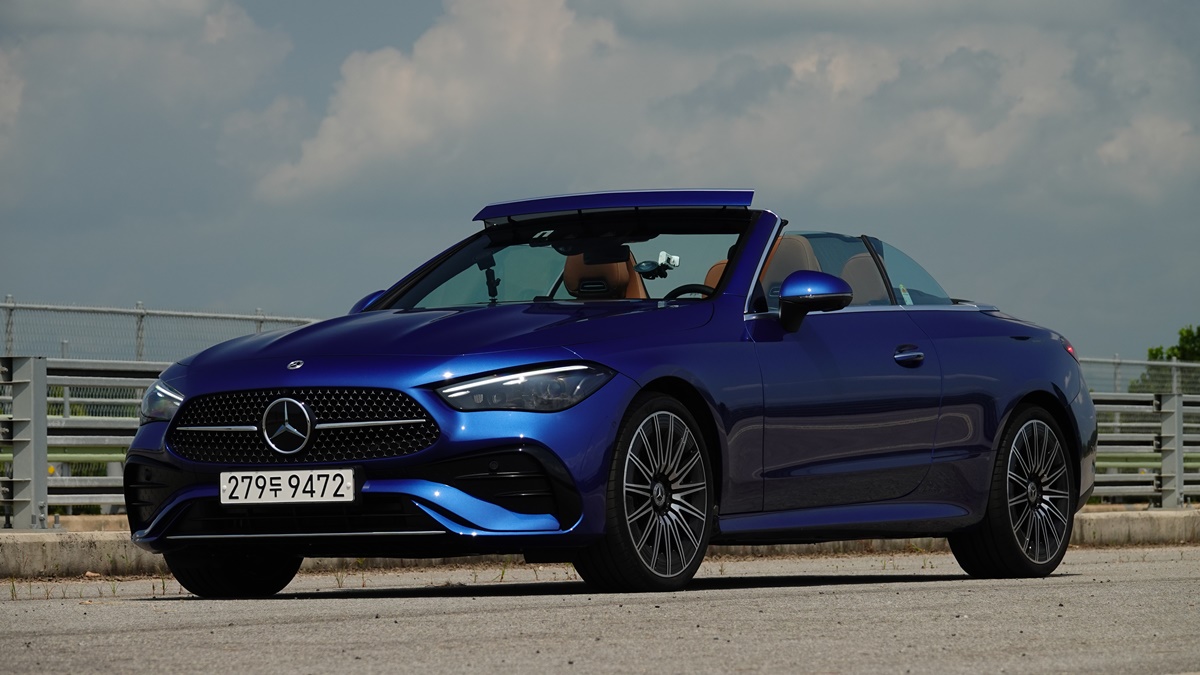
Open cars, convertibles, cabriolets—these all refer to the same concept but with different names. Here, we will stick to the term “cabriolet” as seen in the name of our test vehicle: the Mercedes-Benz CLE 450 4MATIC Cabriolet.
The CLE lineup combines coupe and cabriolet bodies along with the 200 and 450 powertrain options in its domestic sales framework. It’s a two-door convertible. The black soft top unequivocally signifies its identity as a cabriolet. The radiator grille is filled with the pride of Mercedes, showcasing a star pattern and a central star emblem, complemented by the Mercedes badge at the very edge of the hood. It’s a visual statement that repeats, “I am a Mercedes.”
From the moment I sit in the driver’s seat, excitement fills the air. I am eager to open the roof. When shall I do it? If you have the courage to enjoy the gaze of others, doing so in the middle of the city isn’t a bad idea. After all, cabriolets are made for that thrill. It’s a car that allows you to relish the scenery outside while playfully acknowledging the looks from others observing your ride.
Of course, if this discomfort bothers you, it’s perfectly fine to find a quiet place to open the roof and drive freely. A tranquil suburb or a beach at sunset would be ideal. Whether it’s the city or the beach isn’t the primary concern, but on a midday in August, I would advise reconsidering. The glaring sunlight can be quite harsh.
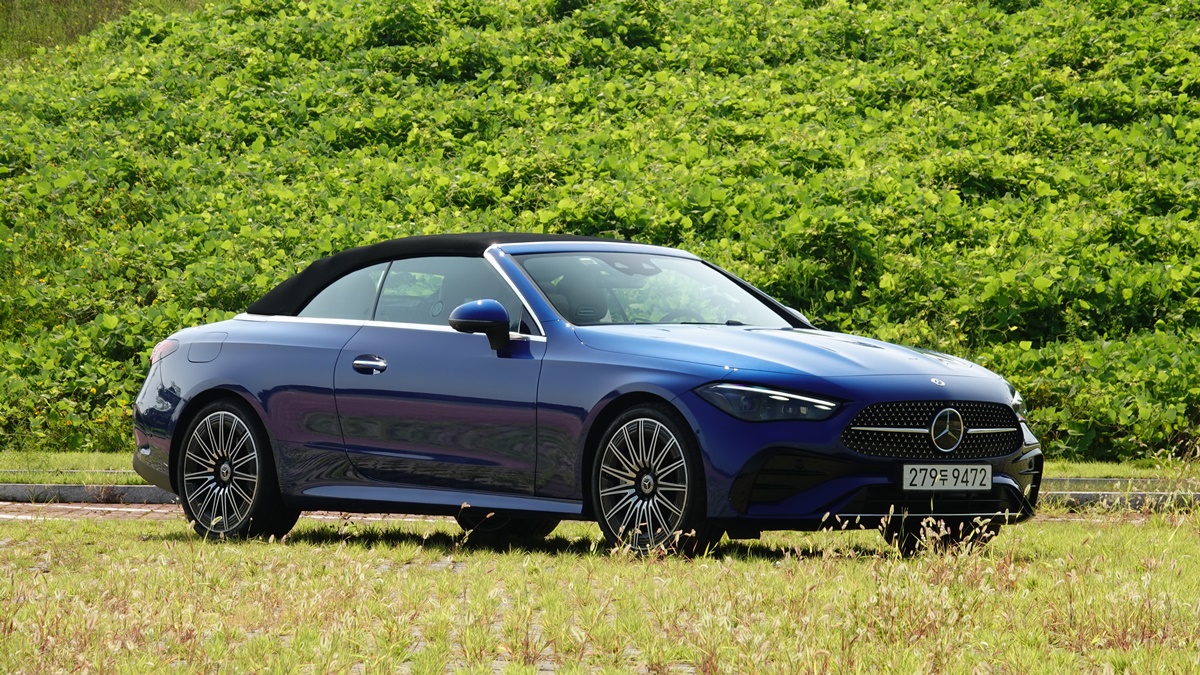
Starting my journey with the roof closed in the bustling Gangnam city center, it’s daunting to open the roof amidst heavy traffic, especially with the exhaust fumes from the cars in front. Although it’s relatively quiet, it doesn’t reach the level of a sedan. While the cabriolet is on the quieter side, you shouldn’t expect complete silence from a soft-top convertible. Rather, you should enjoy the sound of the wind rushing through the open window. The faster you go, the more pronounced that sound becomes.
With dimensions of 4,850 × 1,860 × 1,430mm and a wheelbase of 2,865mm, sitting position is notably low. The CLE Cabriolet is actually 10mm lower in height compared to the C-Class sedan, which provides a sensation of increased speed at the same velocity. You encounter a much more dynamic driving feel, similar to how lowering the camera height enhances the portrayal of speed on the road. When you open the roof, that sensation is amplified.
The rear side has gained more width. You can easily tell this by just looking or by sitting inside. The preconceived notion that a two-door car would have a cramped back seat is definitely broken here. Although the high center tunnel establishes a boundary that restricts the space, it is still a four-seater. The absence of a middle seat in the rear does not hinder its utility.
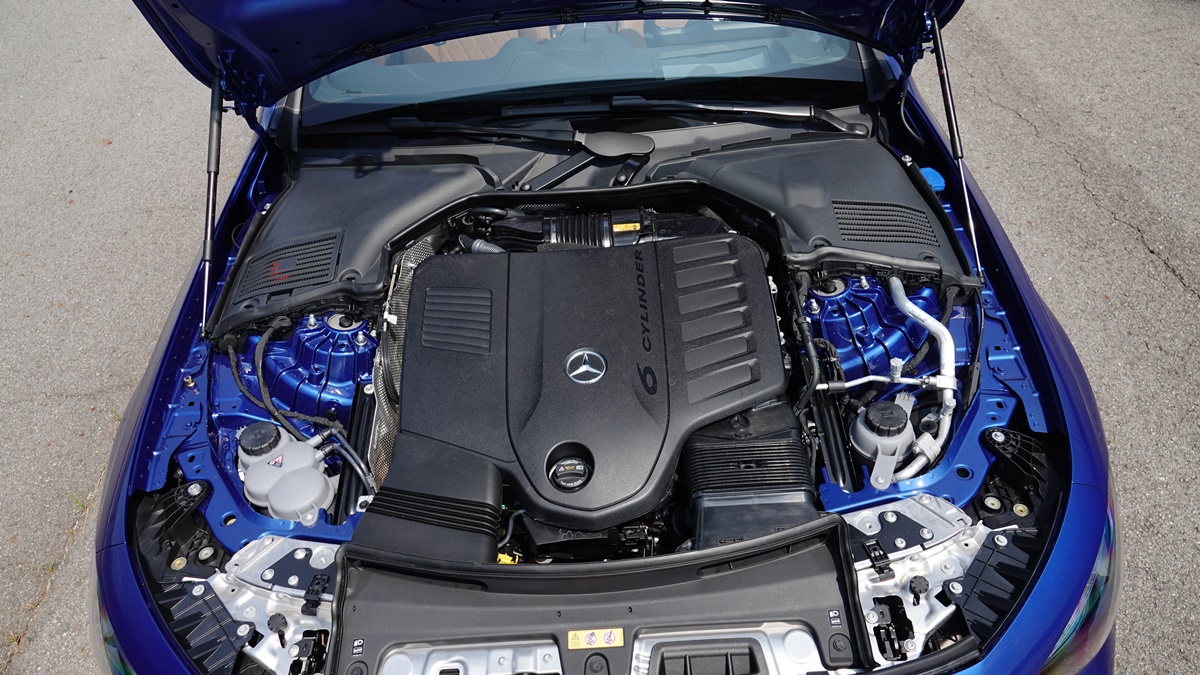
The inline six-cylinder 3.0-liter turbo gasoline engine delivers a maximum output of 381 horsepower and a torque of 51.0kgm. With a curb weight of 2,045kg, it handles 5.36kg per horsepower. This relatively lightweight chassis for a car over two tons allows for agile movement. The 9-speed automatic transmission and the 48V mild hybrid system seamlessly marry power with efficiency, allowing the engine speed at 100km/h to fluctuate between 1,300rpm in 9th gear to over 4,900rpm in 3rd gear, meeting high efficiency and robust power delivery.
The 48V mild hybrid system provides an additional boost of 17kW based on driving conditions, facilitating gliding, boosting, and regenerative braking. This system acts as an efficient manager for conserving fuel while enhancing acceleration and improving efficiency through regenerative braking.
Although the temperature exceeds 30 degrees, the interior remains cool, thanks to the closed roof. The dynamic body control suspension continuously adjusts the damping at both front and rear axles. Mercedes explains that it controls the suspension, engine, transmission, and the steering characteristics and damping characteristics of each wheel to adapt to driving situations, speed, and road conditions. While I may not be able to individually verify these functions, I can certainly agree on the flawless comfort during the ride.

Accelerating fully in sports mode reveals the captivating engine sound. As speed rapidly increases, I don’t get to enjoy it for long. I take brief moments to press the pedal, reveling in the rich engine sounds and exhilarating speed.
Opening the roof requires bravery on such a hot day. The moment I press the button and a gap appears, the heat of August hits. As the roof folds, the boundary between the inside and outside of the car disappears. You can operate the roof while traveling at speeds below 60km/h, and it takes 20 seconds to fully open or close.
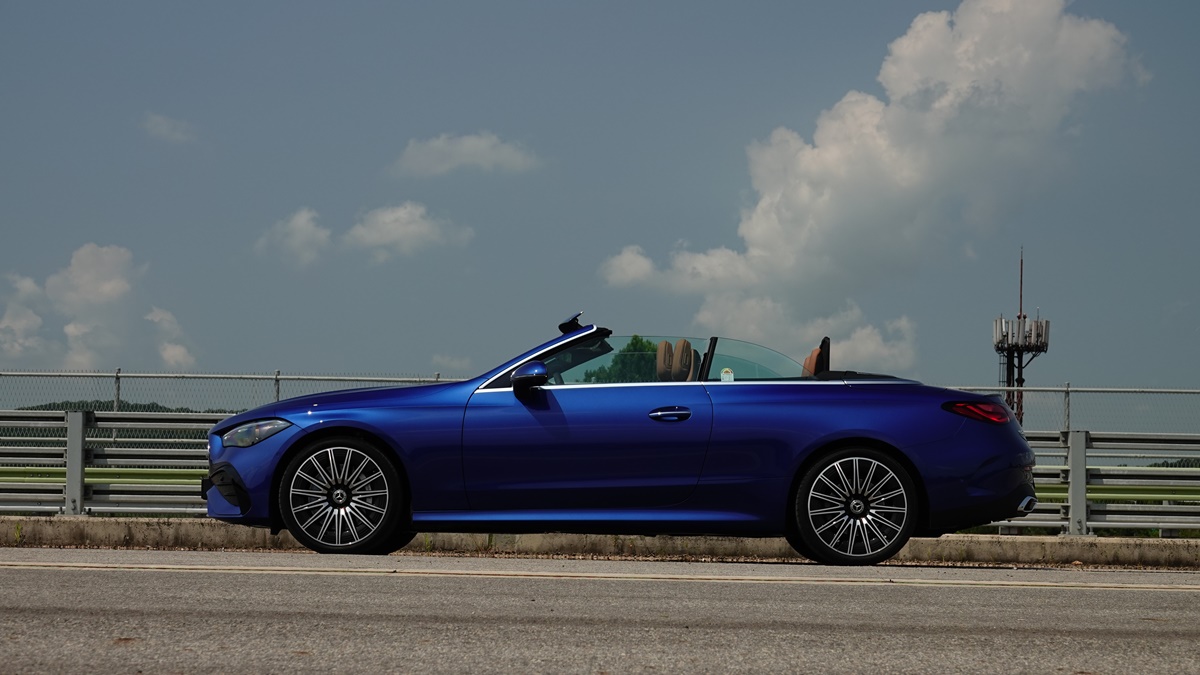
Once the roof is opened, it creates a whirlwind of excitement. The wind rushes in and hair goes wild. If you’re not careful, you might lose your hat too. This is why it’s essential to tidy up the cabin before opening the roof. Post-roof opening, there’s also something to do: activate the air cap. Pressing a button deploys a spoiler that adjusts the angle at the top of the car window to counteract the wind direction, while a wind deflector rises between the rear headrests. This helps manage the winds rushing in, calming the hair that was previously flailing. The interior becomes serene, as if the storm had stopped. This is the moment of experiencing real aerodynamics.
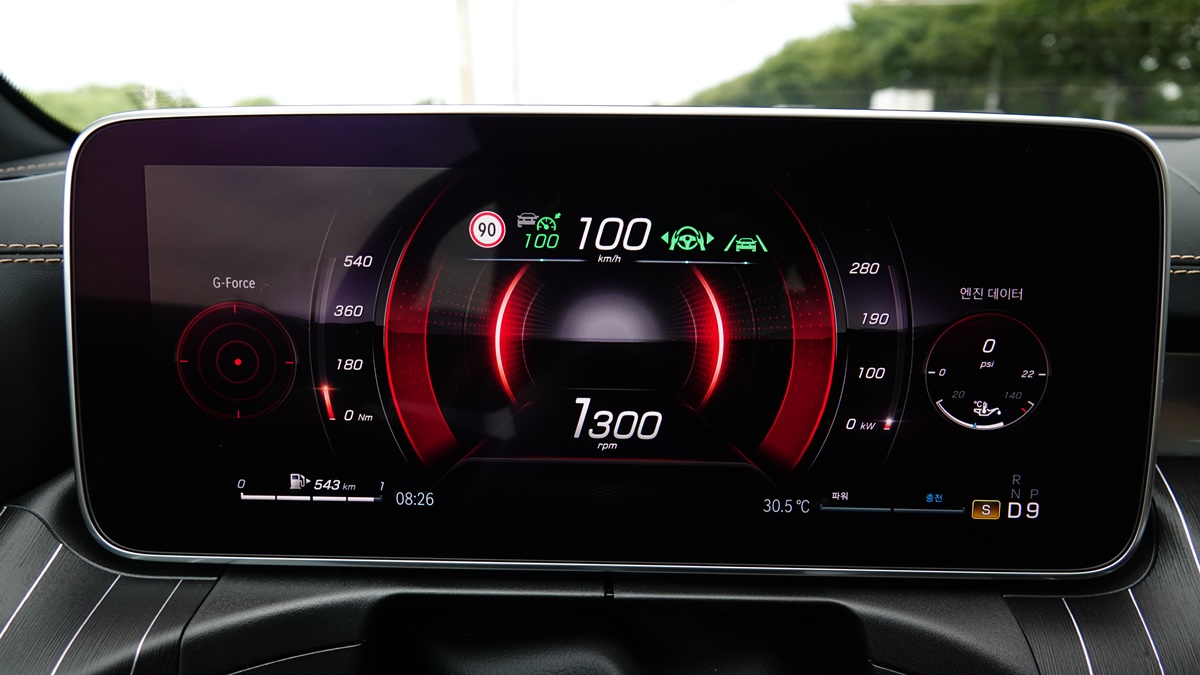
The vehicle also features the Airscarf function. Warm air flows from beneath the headrests, enticing you to open the roof even in winter. Just imagining driving with the roof open and warm air on the back of your head on a cold December day is delightful. It feels reminiscent of soaking in a hot spring.
The cabriolet emphasizes leisure and romance. It’s not a car meant for speed and urgency. Instead, it invites you to drive leisurely with the roof open and relish both the scenery outside and the onlookers appreciating your car. If the gaze of others feels burdensome, then the cabriolet might not be the right choice for you.
There’s no real need to discuss the various driving assistance systems, safety, and convenience features. They are tailored precisely to the standards we expect from a Mercedes-Benz. The Driving Assistance Package Plus offers smooth lane change assistance, while digital lights optimize headlamp brightness based on road illumination, traffic conditions, driving routes, and weather. Additionally, the navigation system features augmented reality, and there’s a parking package with a 360° camera system.
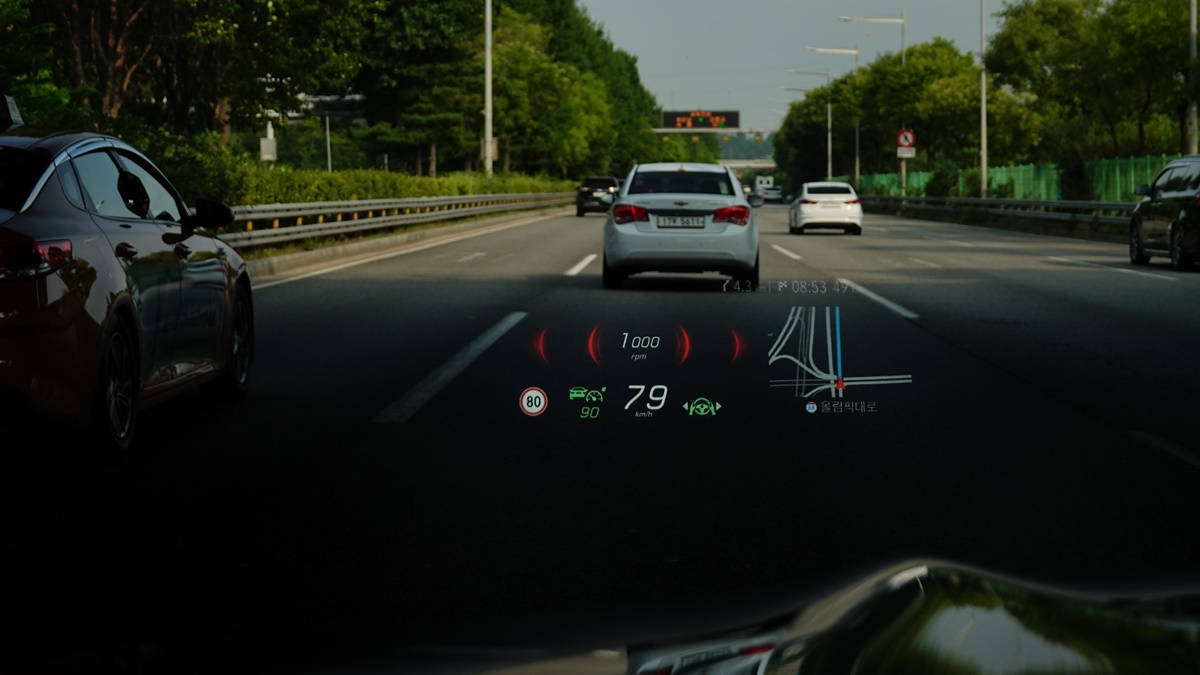
The Burmester 3D surround sound system, equipped with Dolby Atmos technology, features 17 speakers along with a 710W amplifier. Speakers are integrated into the seat backs, offering a deep and immersive sound experience. Moreover, both the driver’s seat and the front passenger’s seat come equipped with massage functions.
Pricing starts at 100.8 million KRW. The CLE 200 Cabriolet is priced at 78.8 million KRW. It’s clearly not a car focused on cost-effectiveness.
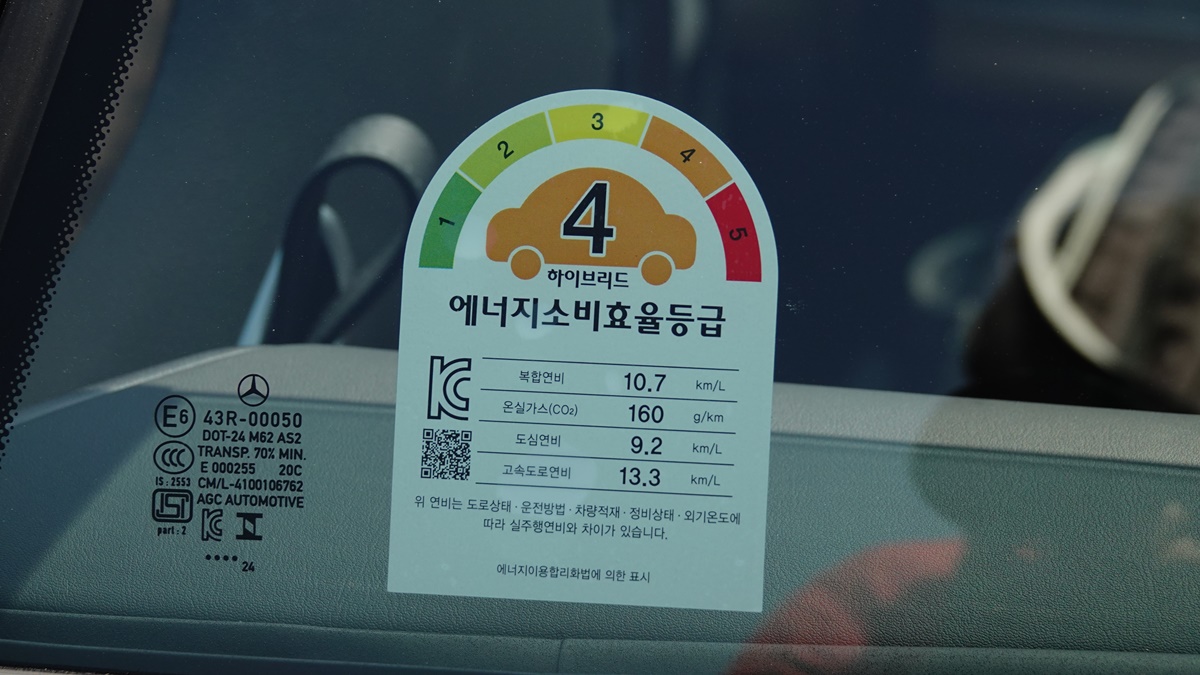
Oh Jong-hun’s direct review:
The space for wirelessly charging smartphones is cramped. It’s designed to fit inside the two cup holders, under the center fascia, where it’s a narrow enclosed space. If there’s a cup in the cup holder, inserting or removing the smartphone can become quite tricky.
The center fascia monitor can be tilted up to 40 degrees with the press of a button. The manner in which it abruptly sits up is somewhat awkward. While adjusting the angle may enhance clarity, it’s not uncomfortable to view from any angle, meaning such a feature feels almost unnecessary. It’s a bit of an over-spec situation. Personally, I believe it’s best to do away with the adjustable monitor feature altogether.
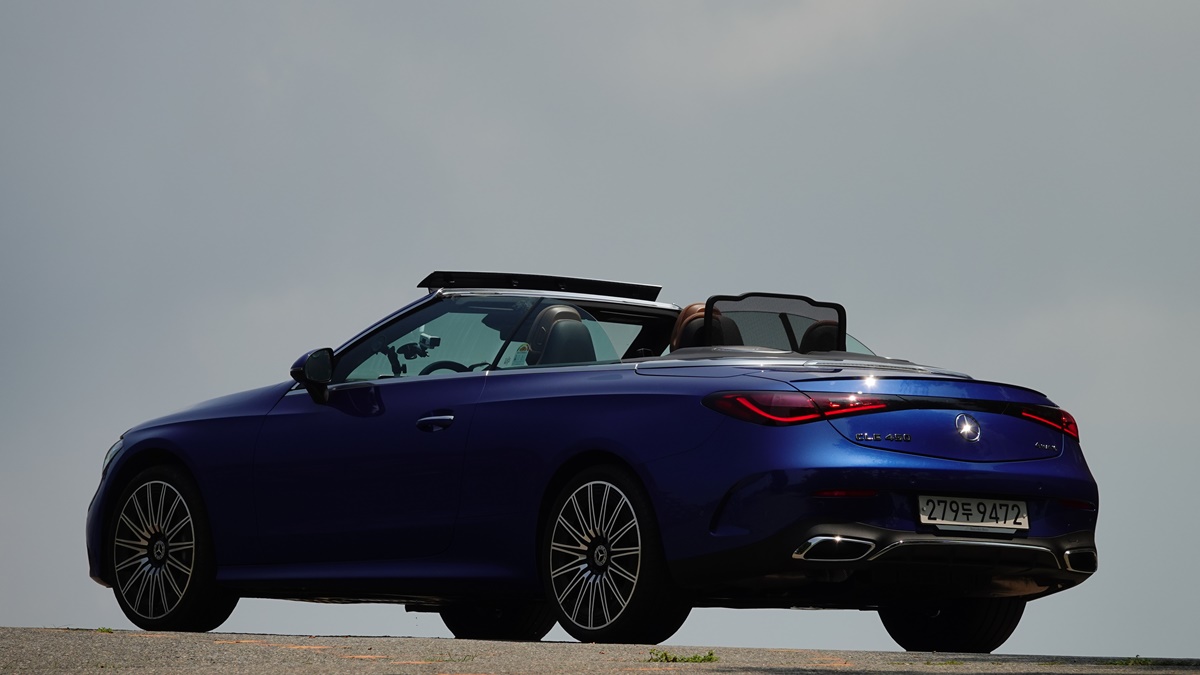
Oh Jong-hun yes@autodiary.kr

